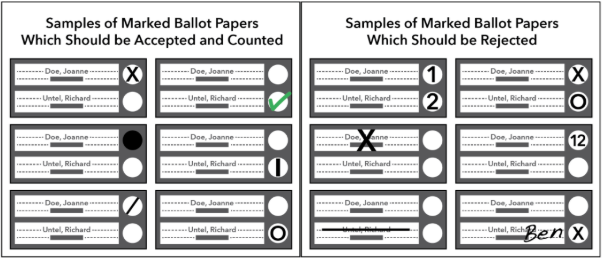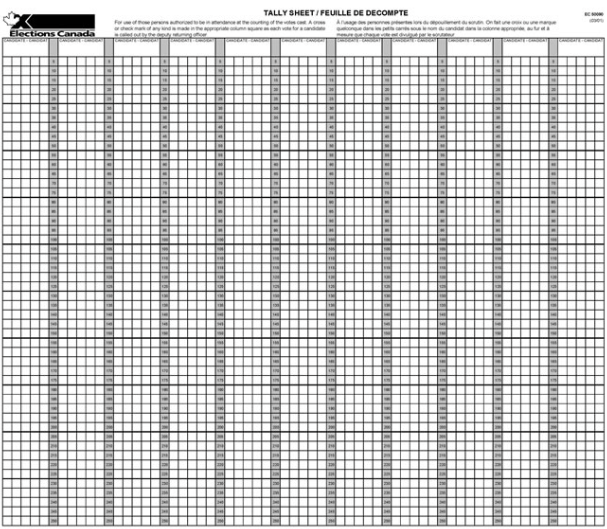7.1 Manual Counting
 When voting hours conclude and voting locations close, election workers can breathe a sigh of relief. Or can they? After voting ends, another monumental task begins – counting the votes. Vote counting procedures can vary across countries – and even within them – yet the process typically follows a predictable series of steps: tabulating, accumulating, and reporting.
When voting hours conclude and voting locations close, election workers can breathe a sigh of relief. Or can they? After voting ends, another monumental task begins – counting the votes. Vote counting procedures can vary across countries – and even within them – yet the process typically follows a predictable series of steps: tabulating, accumulating, and reporting.
Tabulating Votes
The physical counting of votes, called tabulating, can happen using several methods. Tabulating processes can differ based on how the votes are counted, when the votes are counted, and even where they are counted.
Before Counting Begins
Before counting begins, there may be preparatory actions required before ballots can be tabulated, such as removing security seals to open ballot boxes (ACE Electoral Knowledge Network, n.d.-h). Processing or pre-canvassing may also involve preparing absentee ballots for counting, such as unfolding them or removing privacy sleeves (NCSL, 2024). Once preparation is complete, the actual counting of votes can begin. This can be manual or computer-assisted.
Manual Counting
Single-member plurality systems with simple ballot designs, such as Canada’s, tabulate ballots by hand. Manual counting is conducted by election officials, such as a deputy returning officer, and it is observed by representatives of the respective candidates or political parties (Elections Canada, 2025, March 7). With manual counting, election officials have to make determinations about the validity of a ballot. In Canada, ballots are determined to be invalid if there are markings outside the designated space (Elections Canada, 2025, March 7). The image below provides some examples.

The counting proceeds with each ballot being shown to observers, identified as a valid vote, and then recorded on a tally sheet, which is shown in the image below.

Image Description
This is a sample tally sheet for use in the counting of the votes. It has a column for each candidate in the electoral district, with rows of squares below in increments of 5. When the deputy returning officer calls out a vote for a candidate, the person using the tally sheet marks a square in the appropriate column to keep count of the votes.
Manual counting is effective and transparent, but it can quickly become unworkable with larger electorates and more complex ballot designs.

